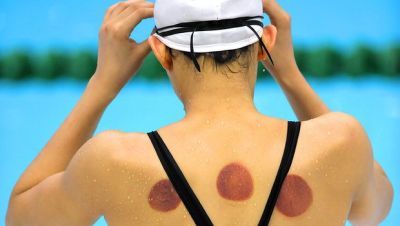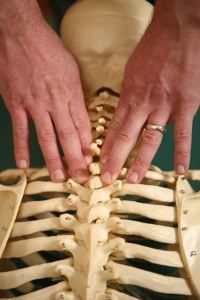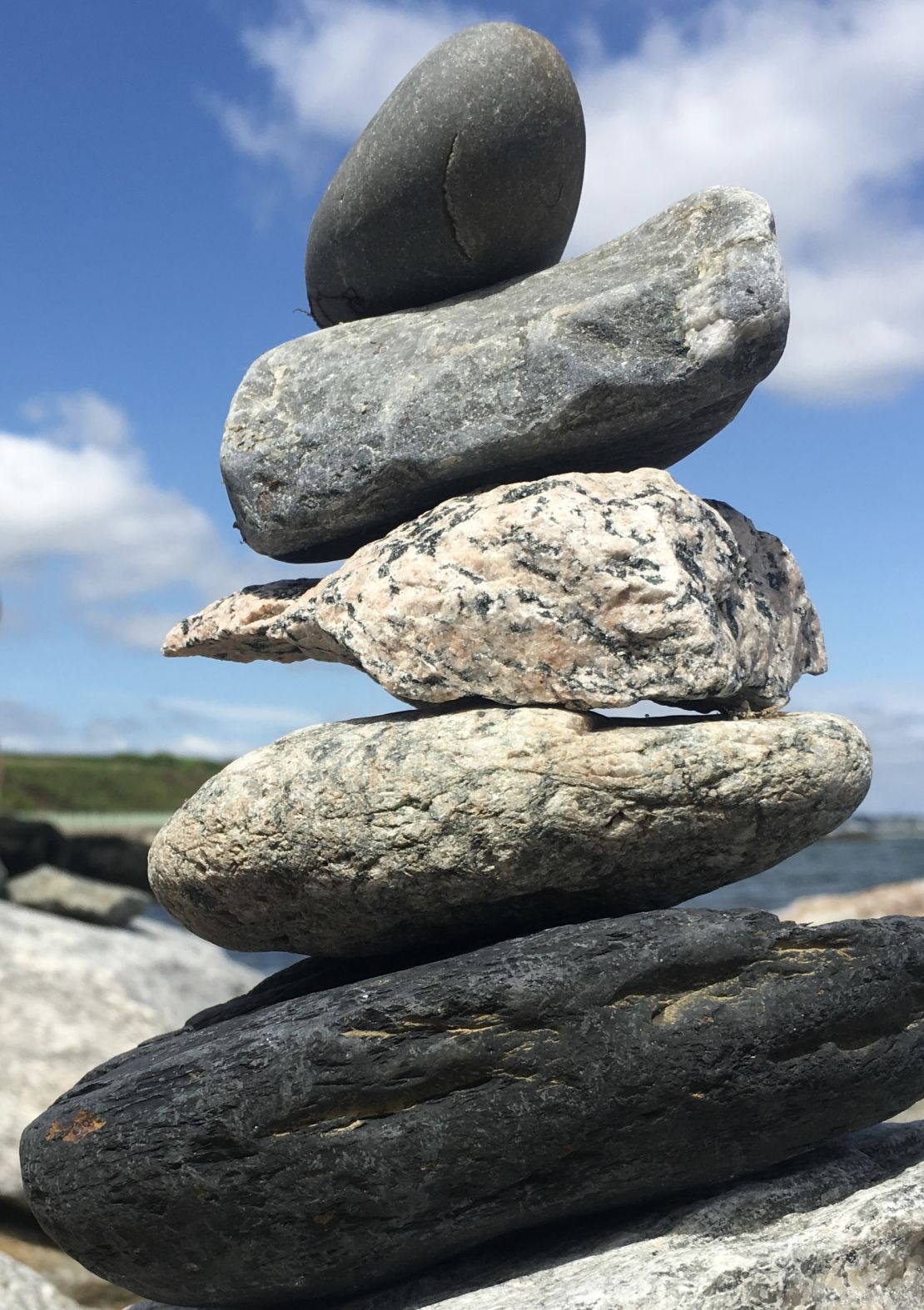Modalities
Beyond Massage...
Raffi Kaivalya's neuromuscular therapies go beyond deep-tissue massage to achieve lasting results.
At his office in Watertown, MA, he helps clients live pain free using manual therapies including:
» New Client - Initial Evaluation » Trigger Point Therapy
» Myofascial Release » Neuromuscular Re-Education
» Sports Massage » Myoskeletal Alignment
» Orthopedic Massage » Pregnancy Massage
» Scar Tissue Release » Cupping Therapy
New Client - Initial Evaluation
An Initial Evaluation at Kaivalya Bodywork's Watertown office is the first step towards living pain free.
This includes an intake of one's unique history, posture, and gait among other assessments. At this session, Raffi will discuss which combination of modalities will help you get back to doing the things you love. This almost always involves some combination of Postural Restoration® and focused massage.
Orthopedic Massage
Orthopedic massage is a style of massage therapy focused on treating painful conditions that affect the soft tissues of the body. Because orthopedic massage is designed to treat medical conditions, it requires extensive training. It involves releasing tense muscles, helping to stretch and lengthen tight muscles and tendons, and decompress rigid joints. My goal is to restore full health to the soft tissues of your body, both treating your specific conditions as well as improving your overall well-being.
Scar Tissue Release
Scar tissue release is appropriate for any type of scarring, including injury, surgery, joint replacement, implants, skin grafts, and burns. This is a very light, gentle, process that can produce profound results in both surface and deep scar tissue. Most scars can be addressed within the course of a 60min or session, but if the area of scarring is large, a session should be scheduled specifically for this purpose or choose a longer session option. The technique is equally effective regardless of how long you have had the scar.
Myofascial Release
Myofascial release is a form of soft tissue therapy intended to eliminate pain, increase range of motion, and rebalance the entire body. It does this by using massage techniques to stretch the fascia and release the bonds that exist between the fascia, muscles and bones. Fascia is the connective tissue that connects and covers all muscles, organs, and skeletal structures of the body. Direct myofascial release is sometimes known as deep tissue work. Indirect release applies light pressure and gently stretches the fascia; this allows for increased blood circulation and relief from pain.
Sports Massage
Sports Massage is a massage designed for highly active people who engage in athletics. Engaging in sports is harsh on the body and can often lead to injuries in both the short and long term. Sports Massage enhances performance and prolongs a sports career by helping to prevent injury, reduce pains and swelling in the body, relax the mind, increase flexibility, and dramatically improve recovery rates. Sports Massage is also highly effective in aiding the rapid recovery of an athlete from an injury by encouraging greater kinesthetic awareness and in turn promoting the body's natural immune function.
Trigger Point Therapy
Myofascial Trigger Point Therapy is a style of manual therapy that focuses on deactivating problematic trigger points in skeletal muscle. Trigger points are hyper-irritable spots within a taught band in a muscle that give rise to reproducible and familiar pain and can interfere with proper function and muscle firing patterns.
During the session, focused pressure is applied through a variety of techniques in order to release and deactivate trigger points. Although this process can be painful at times, it often "hurts so good".
Neuromuscular Re-Education
Neuromuscular re-education is a general term and integral part of (NMT) neuromuscular therapy that refers to techniques that attempt to retrain the neuromuscular system to function properly. The basis of this idea is that the formation of certain patterns of communication between muscles and nerves allow people to perform simple everyday acts such as walking or climbing stairs. These normal patterns of movement can be disrupted by injuries, dominant postural patterning, or may be impaired in people with certain medical conditions. The general aim is either to re-establish normal patterns of movement in injured people or to create normal patterns of movement in disabled people, by practicing a variety of exercises.
People with specific injuries or challenges often seek out these techniques. This may include people who have experienced fractures, ligamentous sprains, muscle strains, or even people with conditions like arthritis or cerebral palsy. Physically fit people who are always wanting to improve their overall balance, strength, or flexibility, such as professional dancers or athletes, may also seek out certain forms of these therapies.
At its most basic, neuromuscular reeducation is very similar to physical therapy and may involve many of the same techniques to promote healing. This can include postural shifting techniques, stretching routines, and strengthening exercises used to help restore proper joint position, reduce your reliance on dominant patterns of movement, and retrain muscular sequencing and coordination in three-dimensional movement pattterns.
Pregnancy Massage
Pregnancy Massage is a style of bodywork designed specifically for pregnant women. Pregnancy is a time when a woman's body endures tremendous stress due to dramatic physical and emotional changes. Using various techniques specially developed for the expecting mother, Pregnancy Massage helps release the pain and discomfort experienced throughout pregnancy. The benefits are profound, including emotional support, the relief of joint pain due to extra weight and postural imbalance, and improved breathing and relaxation.
There is a specific intake form for this modality under Client Forms.
Cupping Therapy
Cupping is an ancient technique using negative pressure or suction on the skin. The vacuum in the cup brings blood and lymph to the area, promoting circulation and healing. This technique is particularly effective in releasing scar tissue and fascial adheasions. Although the marks sometimes left by the suction look painful, it is a very gentle technique that can produce a lot of change in the tissue without deep painful pressure.
This is an add-on technique to a massage appointment. 75min or longer session is recommended. Please request at the time of scheduling.
Tui na
Tuina (pronounced “twee-nah”) is a form of massage that removes blockages along the meridians of the body and stimulates the healthy flow of chi (vital energy), lymph and blood. This energizes the patient’s innate self-healing mechanism. Tuina encompasses a broad range of techniques ranging from light stroking to deep tissue work. Hand and arm techniques are used to massage the soft tissue of the body, stimulate acupressure points and mobilize various joints. Herbal liniments and other modalities requiring the use of implements such as guasha and cupping may be incorporated to aid in the healing process.
Visceral Manipulation
VM assists functional and structural imbalances throughout the body including musculoskeletal, vascular, nervous, urogenital, respiratory, digestive and lymphatic dysfunction. It evaluates and treats the dynamics of motion and suspension in relation to organs, membranes, fascia and ligaments. VM increases proprioceptive communication within the body, thereby revitalizing a person and relieving symptoms of pain, dysfunction, and poor posture.
Myoskeletal Alignment
What is Myoskeletal Alignment? 
From Erik Dalton, PhD, founder of Freedom From Pain Institute, creator of Myoskeletal Alignment Techniques.
What makes MAT Special?
Well-documented theories explain how joints become fixated from myofascial stressors; yet relatively unknown in the massage therapy community is how joint dysfunction creates protective muscle spasm and dysfunctional strain patterns, such as extended postures, breathing discord, and scoliosis. This reflexogenic relationship between muscles, breathing, and joints is the foundation of the Myoskeletal Alignment Technique and is considered not only uniquely different from traditional thinking, but possibly an important next step in addressing abnormal strain patterns caused by neuromuscular imbalances.
Trained therapists can now safely address all soft tissues, including ligaments, nerve dura, fasciae, discs and joint capsules, responsible for much of the pain previously blamed on muscles alone. Osteopathic methods, such as muscle energy, strain-counter strain and mechanical link, are also designed to relieve muscle/joint dysfunctions, but the MAT method complements today’s bodywork practices as it was specifically designed to fit a massage-therapy format.
One distinguishing goal that establishes the MAT method apart from other techniques is its dependence on identification and correction of joint fixations. This is accomplished by systematically releasing deep spinal muscles, ligaments and fibrotic joint capsules that torsion and compress spinal joints. In some cases, a bodyworker may apply direct pressure to bones to release fibrotic muscles that create joint blockages, but the intent is always soft-tissue work.
Posture’s Role
Most manual therapists today agree that no therapeutic approach to neck/back pain is complete unless body posture is generally improved. Whatever the root of the client’s condition, special attention must be dedicated to posture-especially the correct positioning of the pelvis. Many therapists complain that postural assessments are often too complex, too time-consuming, too clumsy-in a typical massage setting with the client draped.
The MAT method lessens assessment anxiety with an efficient five-minute hands-on evaluation that quickly identifies gross body asymmetries, such as pelvic tilts, short legs, sacroiliac dysfunctions, scoliosis, facet restrictions and hip-capsule adhesions. MAT also incorporates Vladimir Janda, M.D.’s upper-and-lower crossed visual assessment method for easy recognition of muscle-imbalance patterns that cause neck and low-back pain. Combining these hands-on and visual assessment techniques allows the therapist to immediately tell which muscles are tight and pulling unevenly on the body’s bony framework, and which weak muscles are permitting the asymmetry. Janda’s muscle-imbalance research has gifted bodywork practitioners with a remarkably useful model for explaining how predictable muscle imbalances cause predictable faulty postural patterns, such as slumped shoulders, forward heads, swaybacks and dowager’s hump.
Ultimately, for long-lasting relief of chronic neck/back pain, the MAT system works to achieve these goals:
- balancing the head on the neck
- balancing the neck on the shoulders
- balancing the shoulder girdle on the rib cage
- balancing the pelvis on the femurs
- restoring pain-free movement
Recent studies have confirmed a noticeable reduction in noxious neural input entering the spinal cord and brain when the postural goals listed above are met. In 1979, biomechanical researcher J. Gordon Zink, D.O., coined the term “common compensatory patterns” to describe routinely found postural patterns in the neuromyofascial-skeletal system. His studies were the first to validate how structure and function play a dual role in posturally initiated pain syndromes. Eventually, he concluded that postural muscle stress leads to chronic, recurrent central nervous system irritation initiated by sensory receptors, such as mechanoreceptors, nociceptors and chemoreceptors.
Postural muscles are structurally designed to resist fatigue and function in the presence of prolonged gravitational exposure. If their capacity to resist stress is lost, the postural muscles become irritable, tight and shortened. Fortunately, as balance and function are re-established in distorted myofascial structures, hyperactivity in agitated joint and muscle receptors rapidly dissipates. Zink’s conclusion leads to the underpinnings of the client’s outcome: less sympathetic muscle spasm, less limbic system activation, less stress-and less pain.
Postural Restoration
BASIC CONCEPTS OF THE POSTURAL RESTORATION INSTITUTE®

The human body is not symmetrical. The neurological, respiratory, circulatory, muscular and vision systems are not the same on the left side of the body as they are on the right, and vice versa. They have different responsibilities, function, position and demands on them. This system asymmetry is a good thing and an amazing design. The human body is balanced through the integration of system imbalances. The torso, for example, is balanced with a liver on the right and a heart on the left. Extremity dominance is balanced through reciprocal function; i.e. left arm moves with right leg and vice versa.
Postural Restoration Institute® (PRI) recognize these imbalances and typical patterns associated with system disuse or weakness that develops because of dominant overuse. This dominant overuse of one side of the body can develop from other system unilateral overuse. For example, if the left smaller diaphragm is not held accountable for respiration as the right is, the body can become twisted. The right diaphragm is always in a better position for respiration, because of the liver’s structural support of the right larger diaphragm leaflet. Therefore, the left abdominals are always important to use during reciprocal function, such as walking, to keep the torso balanced.
Keeping the right chest opened during breathing is also challenging since there is no heart muscle inside the right side of the chest. Standing mainly on the right lower extremity to offset the weight of the left upper torso, assists in moving the pelvis forward on the left and the shoulder complex down on the right. This asymmetry compliments the special functions of the two sides of the brain. Although the two sides (hemispheres) of the brain share responsibilities for some functions, each hemisphere has its own “specialties”. Each hemisphere controls the opposite side of the body. The left brain has more responsibilities for speech and language and thus the right upper extremity becomes a dominant extremity in communication, growth and development. PRI credentialed professionals recognize when this normal pattern is not balanced sufficiently with left extremity neurologic and muscular activity.
When these normal imbalances are not regulated by reciprocal function during walking, breathing or turning, a strong pattern emerges creating structural weaknesses, instabilities, and musculo-skeletal pain syndromes. Balancing muscle activity around the sacrum (pelvis), the sternum (thorax) and the sphenoid (middle of the head) through a PRI approach best positions multiple systems of the human body for appropriate integrated asymmetrical function. PRI credentialed professionals incorporate reciprocal function to reduce ‘leading’ with the left pelvis and right arm, and respiratory function to maximize airflow in and out of the right lung.
Vision, occlusion, hearing, foot pressure, occupational demands, in-uterine position, etc. can all influence asymmetrical tendencies and patterns. Humpback whales bottom-feed on their right side, lemurs tend to be lefties when it comes to grabbing their grub, toads use their right forepaw more than their left, chimpanzees hold a branch up with the left hand and pick the fruit with their right hand, and humans usually balance their center of gravity over their right leg for functional ease and postural security. PRI credentialed professionals recognize the more common integrated patterns of human stance, extremity use, respiratory function, vestibular imbalance, mandibular orientation and foot dynamics; and balance these patterns, as much as possible, through specific exercise programs that integrate correct respiration with left side or right side inhibitory or facilitory function.